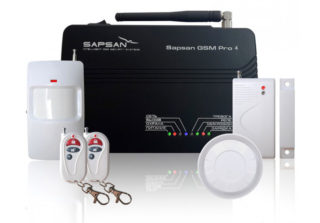Innovative heaters are complemented by a remote control system. The GSM module for heating boilers has become a serious competitor to remotes and stationary systems of the classic type. This is a convenient controller equipped with sensors and connected to boilers of all categories. Before buying a module, you should study its device in advance, the pros and cons, as well as the requirements for installing it.
Purpose and functions of the GSM module for heating boilers
Despite the fully automated operation of heating boilers and their ability to maintain the desired temperature on their own, sometimes unforeseen situations can occur. The GSM controller for heating control is responsible for processing and transmitting data from the device to the user and back in the form of text messages. The main task of the module is to support the settings and prompt response to any changes in the operation of the equipment. The device helps prevent and correct:
- freezing the heating circuit;
- problems with gas supply or fuel leak;
- coolant flow;
- power outage;
- a sharp increase in pressure;
- gas burner extinction;
- overheating of heating equipment.
The remote device provides all the necessary data from external sensors that are connected to the controller. You can control the boiler using SMS messages, a mobile application, voice commands or from the manufacturer’s website. This type of module is recommended to owners of country houses and cottages, as well as to those who often leave for a long time. It can also be used as part of the heating system control in a smart home.
GSM module device
The module is a controller board with a special GSM package that transmits information using cellular communication. The controller is responsible for connecting sensors and is part of a standardized control channel for household appliances. It can have a basic or advanced configuration. The list of the main components of the device includes:
- GSM module for cellular communications;
- an interface for connecting sensors and communication lines to an electric boiler and other elements;
- controller and central processor;
- Power Supply;
- battery for backup power.
Extended equipment includes auxiliary temperature sensors, a microphone, sensors that detect the flow of water, ignition, smoke, the penetration of outsiders into the home. It may also include a device for opening an entry gate and other additional elements. Modern modules are compact in size, supplemented by a display, LED indicators and connectors for connecting external devices.
The user can choose one of several modes, on which depends what data he will receive about the operation of the device. This can be automatic, manual or alarm mode.
Advantages and disadvantages of remote control
GSM boiler control has many other advantages besides remote control and battery life. Users add the following advantages to this list:
- the ability to update data during each connection remotely;
- sending data to a personal smartphone;
- minimizing the risk of outsiders access to the system;
- instant data acquisition in case of an unusual situation;
- timely systematization and updating of data coming from sensors.
The module also has its drawbacks: dependence on the quality of coverage of the mobile network, which is responsible for the stability of transmission and exchange of information. Owners of such devices note their high cost, especially when it comes to the module with advanced configuration. Despite this, the costs are fully recouped during operation due to the complete optimization of energy consumption.
Experts do not recommend connecting the GSM module for an electric or gas boiler on their own without experience, as well as setting up and checking such equipment.
Basic Installation Requirements
Installing a GSM module to control the boiler is permissible at a point from which you can connect all the necessary sensors and interfaces. In this case, the length of the line to the temperature sensor must be taken into account, it can be 1-100 meters, taking into account the functionality of the device. Communication lines from control boilers should be as short as possible, especially if the task of the module is to switch the boiler power supply. At the installation site, mobile communications should work well, for its improvement it is permissible to use a remote antenna.
It is best to install the module directly next to the boiler at a distance of not less than 1.5 meters and with a lift of not more than 50 cm to prevent water from entering the device in case of an accident. If necessary, the blocks are placed outside the boiler room in a well-heated room, where there should be free access to it for monitoring and tuning the boiler. Connection is carried out using a separate power line from the unit or shield or using a wire to the nearest outlet.
Popular models
A large number of modules from Russian and foreign manufacturers are presented on the market. Among them, there are three models of devices that have proven themselves as ideal options for heating boilers.
Xital GSM
Xital GSM is a cellular monitoring system with advanced functionality. With it, you can configure all the necessary parameters during the operation of the heating equipment. The module is equipped with an alarm system that notifies the owner of an SMS message in case of a change in the set mode. Data can be output to any mobile device with a fixed IP address.
Sapsan pro 6
The Sapsan Pro 6 module is considered the most innovative controller of the Sapsan brand and makes it possible to configure the system according to the “Smart Home” principle. It is equipped with 8 programmable outputs, operating as dry and open collectors. The device allows you to control not only the heating system, but also the light, video recording system, gates, air conditioning and other elements.
Telcom 2
Telcom 2 is considered one of the most popular due to its affordable cost, compact size, simple settings and the presence of an application that allows you to send commands, including via SMS. The device has a minimal, but at the same time convenient functionality, it makes it possible to control the temperature, set alerts, check the parameters of the boiler, and a special relay is built into its module to turn the heating unit on and off.







